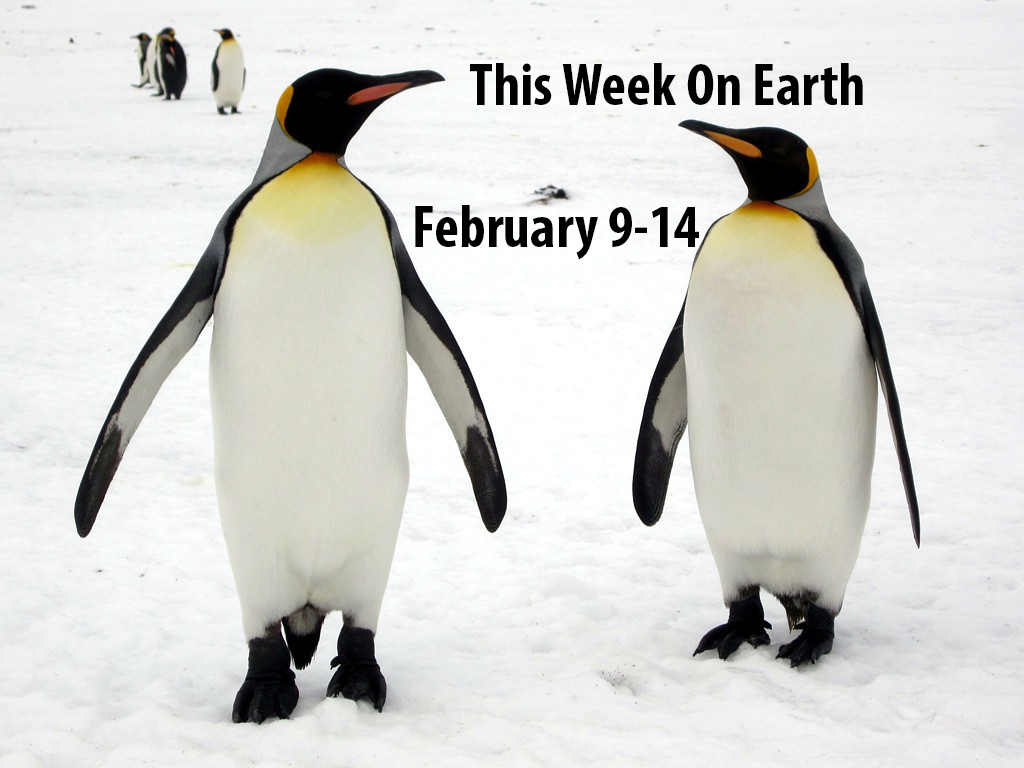This Week on Earth: February 9-14
By Jamie Schmid and Jamie Leventhal
When Ice and Penguins Don’t Mix

A mass murder is taking place and no know one knows about it. About six years ago, a 1,120 square mile iceberg collided into the habitat of the Adelie Penguins, killing off a huge portion of their population.
According to a journal by the Cambridge University Press, since 2011 about 150,000 penguins have died. The chunk of ice cut off the food supply of the Antarctic birds, causing the birds to walk 40 miles to a food source.
Sadly for the penguins, things continue to look gloomy. Unless the iceberg miraculously breaks apart, the colony of birds will likely die out. With climate change, the main concern tends to be melting ice and rising sea levels. However, gigantic icebergs can cause just as much harm as the melting poles. The warmer the Arctic becomes, the colder the Antarctic becomes.
Do U.S. Science Teachers Struggle to Teach Climate Change?

Most high school science teachers now incorporate climate change into their courses. Twenty years ago, one would never find the topic of climate change next to cell biology or genetics in an average textbook.
But just because a subject is being taught does not mean it is being taught correctly. In fact, almost one-third of U.S. teachers who educate students on global warming say that it’s due to natural causes. This comes at odds with the 95 percent of scientists who argue that human created climate change.
The problem could be that these teachers never learned about climate change in college, and they are stuck teaching themselves the newest information. Because climate change is still a relatively new field of study, teachers need to make sure they have current information on the subject.
Thirsty Planet

Two-thirds of the world’s population, or about four billion people, face severe water shortages at least one month every year, according to Arjen Hoekstra, a water management professor at the University of Twente in the Netherlands.
Using a computer model, the professor created an accurate picture of worldwide water scarcity conditions. One of his biggest concerns, according to the New York Times, was that a lack of water could cause crop failure and low crop yields and contribute to rising food prices and starvation.
This number is far greater than previously thought, but affects affluent and poorer countries differently. Affluent countries need to implement water rations in order to portion out amounts for showering and gardening, while poorer countries could have shortages in drinking water.
About half of the four billion live in China and India, but people in the United States, Nigeria and Mexico are among the others represented in the computer model.
Obama Takes Monumental Conservation Measures

As his final few months as president are winding down, President Obama has nearly doubled the amount of unilaterally protected land during his time in office.
The addition of three national monuments in Southern California has created the second-largest desert preserve in the world. The Mojave Trails, Sand to Snow and Castle Mountains cover more than 1.8 million acres of land, according to the Washington Post, and protect the desert, wildlife, and Native American petroglyphs.
These measures have shown the divides between political parties. Some Republicans, like Rep. Paul Cook (R-Calif.), stated that while they weren’t opposed to national monuments, they felt that these new additions lacked congressional and public consent.
Either way you look at it, this is a big step for conservation in America.
[fbshare type="button"] [twitter style="horizontal" float="left"]

